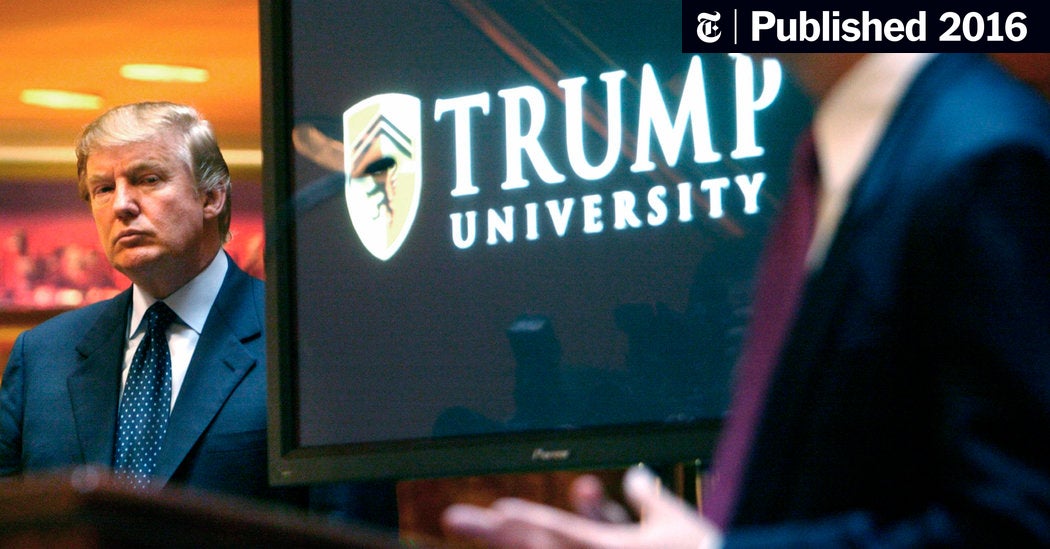Trump's Harvard Funding Threat: A Shift To Trade Schools?

Table of Contents
The Trump Administration's Stance on Higher Education Funding
The Trump administration's approach to higher education funding has been marked by a consistent focus on value for money and a skepticism towards the traditional liberal arts model. Past statements and proposed budget cuts reflect a desire to redirect resources towards programs deemed more directly relevant to the job market. This has manifested in various ways:
- Proposed Budget Cuts: The administration has repeatedly proposed significant cuts to federal funding for higher education, impacting not only Ivy League institutions like Harvard but also state universities and community colleges across the country. These cuts have often been justified by claims of inefficiency and a lack of focus on skills-based training.
- Emphasis on STEM and Vocational Training: The administration has consistently emphasized the importance of Science, Technology, Engineering, and Mathematics (STEM) fields and vocational training, arguing that these areas better equip students for the demands of the modern workforce. This emphasis often comes at the expense of funding for the humanities and social sciences.
- Examples of Affected Universities: Beyond Harvard, institutions receiving significant federal funding, including many land-grant universities and historically black colleges and universities (HBCUs), faced potential budget cuts under the Trump administration's proposed budgets.
- Alternative Funding Models: While specific alternative funding models weren't consistently proposed, the emphasis on private sector partnerships and performance-based funding suggests a move away from traditional federal grant structures.
- Consequences of Funding Cuts: Potential consequences include reduced access to higher education, particularly for low-income students, increased student debt, and a potential decline in research and development across various academic fields.
The Rise of Trade Schools and Vocational Training
The potential shift in educational priorities aligns with a growing recognition of the importance of skilled tradespeople. The demand for skilled labor in fields like construction, manufacturing, healthcare, and technology is rapidly increasing. Trade schools and vocational training programs offer several key advantages:
- Faster Job Placement: Trade school programs are often shorter and more focused, leading to quicker job placement compared to traditional four-year degrees.
- Higher Earning Potential: Many skilled trades offer competitive salaries, often surpassing those of entry-level positions requiring a bachelor's degree.
- Focus on STEM Skills: Many skilled trades require a strong foundation in STEM principles, aligning with the administration's emphasis on these areas. Examples include welding, electrical work, and programming in industrial automation.
- Employment Rate Statistics: Studies consistently show high employment rates for graduates of vocational training programs, often exceeding those of some college graduates.
- High-Demand Trades: High-demand trades include welders, plumbers, electricians, HVAC technicians, medical assistants, and registered nurses, highlighting the significant need for skilled professionals in these areas.
- Potential Wage Increases: The skills shortage in many trades is driving up wages, creating attractive earning potential for skilled workers.
Harvard's Response and the Broader Academic Landscape
Harvard, like other elite universities, is likely to adapt to the potential funding changes. Their response will likely involve:
- Increased Fundraising Efforts: Harvard and similar institutions will intensify fundraising campaigns to offset potential federal funding losses, relying on alumni donations, endowments, and private sector partnerships.
- Curriculum Adjustments: Some institutions may adjust their curricula to better align with market demands, potentially incorporating more skills-based training and vocational elements.
- Admission Policy Changes: Changes in admission policies are less likely, but increased emphasis on practical experience and demonstrable skills alongside academic achievements is possible.
- University-Trade School Collaboration: Increased collaboration between universities and trade schools could emerge, offering students pathways that combine academic learning with vocational training.
The Political Implications of Shifting Educational Priorities
The potential shift towards prioritizing trade schools reflects complex political motivations. It's linked to:
- Economic Nationalism: A focus on vocational training aligns with policies aimed at strengthening domestic manufacturing and reducing reliance on foreign labor.
- Populist Appeals: Emphasizing practical skills and job creation resonates with working-class voters and addresses concerns about economic inequality.
- Arguments For and Against: While proponents emphasize the importance of equipping students with marketable skills and addressing workforce shortages, critics express concerns about reduced access to higher education, potential limitations on intellectual development, and the reinforcement of existing social inequalities.
- Political Viewpoints on Higher Education Funding: The debate over government funding of higher education reveals deeply held ideological differences regarding the role of the state in education and the balance between public and private investment.
- Impact on the Future Workforce: The shift could lead to a more skills-based workforce, but also potential imbalances if the demand for highly specialized skills outweighs the supply.
Conclusion: Trump's Harvard Funding Threat: Rethinking Educational Priorities
Trump's Harvard funding threat, while initially focused on a single institution, highlights a larger conversation about the future of education. The potential shift towards vocational training and trade schools necessitates a critical examination of various educational pathways, balancing the traditional liberal arts with the growing need for skilled tradespeople. The political implications are far-reaching, touching upon economic policy, social mobility, and the very definition of a well-rounded education. We must ensure that all educational pathways are equally valued and accessible, regardless of funding shifts. Further research into the impact of "Trump's Harvard funding threat" and the broader implications for the future of work and skills-based education is crucial. Engage in the discussion and help shape a future where all students have access to the education that best suits their aspirations and abilities.

Featured Posts
-
 Avrupa Yi Sallayacak Transfer Ingiliz Devi Anlasmayi Neredeyse Tamamladi
May 28, 2025
Avrupa Yi Sallayacak Transfer Ingiliz Devi Anlasmayi Neredeyse Tamamladi
May 28, 2025 -
 Jennifer Lopez To Host The 2025 American Music Awards
May 28, 2025
Jennifer Lopez To Host The 2025 American Music Awards
May 28, 2025 -
 Nas Dem Bali Prioritaskan Kursi Senayan Proyek Kedai Kopi Tertunda
May 28, 2025
Nas Dem Bali Prioritaskan Kursi Senayan Proyek Kedai Kopi Tertunda
May 28, 2025 -
 Adanali Ronaldodan Cristiano Ronaldo Ya Tartismanin Tam Oeykuesue
May 28, 2025
Adanali Ronaldodan Cristiano Ronaldo Ya Tartismanin Tam Oeykuesue
May 28, 2025 -
 Ronaldo Portekiz Kampinda Fenerbahcelileri Sasirtti
May 28, 2025
Ronaldo Portekiz Kampinda Fenerbahcelileri Sasirtti
May 28, 2025
